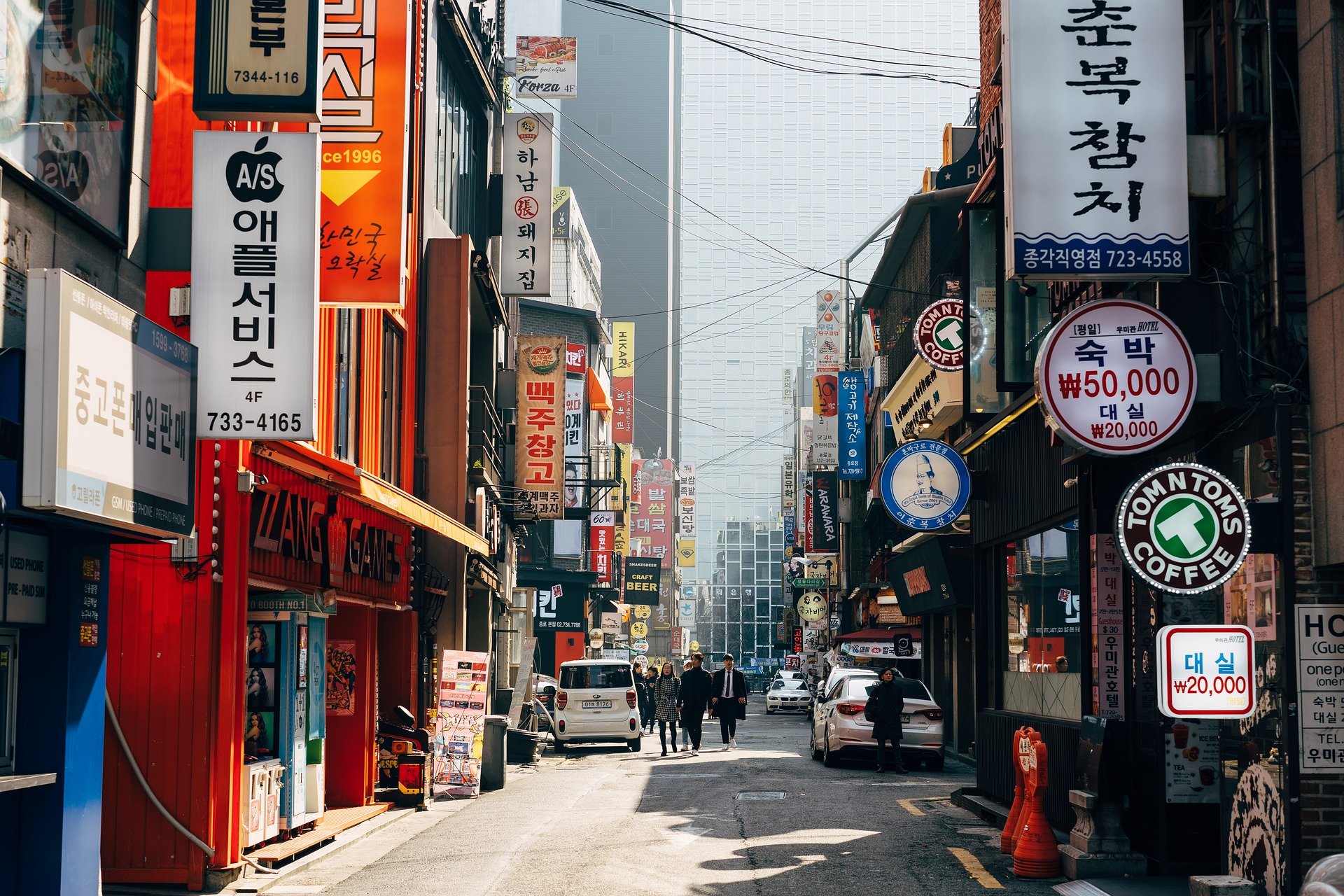K-pop, K-dramas, K-movies? K-culture? South Korean popular culture has flooded our daily lives so much that it has been referred to as the Korean wave, or Hallyu. While everyone seems to be raving about their new favorite Korean media, the Korean wave is also inviting a lot of young people to actively learn more about Korea and even learn the Korean language.
Korean popular culture is widely renowned for Korean pop music, dramas and other forms of Korean media. K-pop has been on everyone’s radar for years, and groups like BTS and Blackpink continue to dominate international music charts. In the U.S. alone, K-pop albums continuously rank among the most bought physical albums, even as physical album purchases have declined in all other genres. Likewise, K-dramas and Korean movies are taking off as well, with recent hits like “Parasite” and “Squid Game” achieving international acclaim.
South Korea as a whole has had a rough and rocky past, with true democratization of the country starting in just 1987. In the aftermath of Japanese colonization in the first half of the 20th century, South Korea focused on reviving its traditional culture but opted out of sharing it with the world. However, due to former president Park Chung-hee’s economic reforms in the 1960s and 1970s, South Korea experienced a rapid economic boom dubbed the Miracle on the Han River. As a result, the country became industrialized and rocketed itself toward a solid financial state.
However, it wasn’t until the Asian Financial Crisis hit the country that President Kim Dae-jung prioritized the export of Korean popular culture. Former president Kim saw the export of Korean pop culture as a way to not only bring economic success to South Korea but also as a way to change misconceptions about the country. South Korea lifted the 50-year ban on cultural exchange with Japan and opened the floodgates for a cultural movement that would shake the entire world.
The Korean wave hit many countries before it stretched all the way to the United States. While there is some debate as to which specific piece of Korean media started Hallyu, most agree that the world got its first taste of the Korean wave in 1997 with the first broadcast of “What Is Love?” on China Central Television. The wave only gained more traction as Korean media was steadily introduced in new countries. In Japan, Hallyu got its start with a drama called “Winter Sonata” in 2003, which spurred a large interest in Japanese travel to South Korea. Even today, there are tours in South Korea that visit the filming sites of major moments in the show.
While Korean pop music has certainly continued to stoke the recent Hallyu fire, it might be surprising to learn that Korean dramas are what originally piqued foreigners’ interest in South Korea. But this doesn’t mean that K-pop didn’t flare up quickly after K-dramas. By the 2000s, South Korean K-pop groups were sprouting into big stars, with boy groups like TVXQ and Big Bang and girl groups like Girls’ Generation and 2NE1 topping the charts. In 2009, Wonder Girls’ song “Nobody” grew to be a smash hit after it was released in English, becoming the first K-pop song to make the Billboard Top 100. These groups laid down the foundation for K-pop to take off, and it has built itself into one of the most recognizable music genres worldwide ever since.
With this recent intense cultural spread comes many different effects. While Hallyu has captured the hearts of many, for students around the globe, South Korea has captured their interest beyond the screen. Even though the language barrier between these fans and their favorite Korean media is deep, many are willing to bridge the gap.
Classes on Korea have become majorly popular, and college curricula across the United States have started offering courses on everything from Korean history to K-pop dancing. Learning more about the media, culture and history of a different country can be important, especially for a country like South Korea that has a long story to tell.
Recently, language learning courses have dwindled in classrooms across the nation. However, Korean seems to be an outlier; in fact, enrollment in Korean language classes increased by 44.7% between 2009 and 2013, as reported by the Modern Language Association (MLA). More recently, the MLA noted that Korean language program enrollments are still increasing, evidenced by the 13.7% rise reported in 2018. Universities have gone from offering no classes on Korean language or culture to being pressured by students to offer more. Many students cite Korean pop culture as the reason they became interested in the country and the language.
In addition to this new interest in learning Korean, modern technology has made studying a new language much easier, and the Korean language is no exception. Apps like Duolingo, Mango Languages and Hello Talk Language Exchange that can help with vocabulary have made the tools needed for studying the Korean language much more accessible. There are also many websites that help new learners with grammar and sentence structure, like Korean Class 101 or 90 Day Korean. And finally, Korean language learners can begin to practice their newfound skills verbally through YouTube channels such as Talk To Me In Korean and GO! Billy Korean.
Studying Korean usually begins with learning the Korean alphabet, or Hangul. Unlike other languages that don’t use Roman characters like Chinese and Japanese, Korean is a phonetic language, similar to English. This means that each character corresponds to a specific sound, and Korean words can be sounded out and spoken by someone who can read Hangul. While Korea uses Hangul today, the Korean alphabet was not developed until 1443, and later promulgated by King Sejong in 1446. Sejong developed the simple writing system so that commoners would be able to learn and read. However, the language was not used widely until 1945, when it became more acceptable for people of a higher social standing to use Hangul.
While South Korea has transformed itself in front of a global audience into an amazing cultural hub, the country has also gained the admiration and affection of many students interested in its culture, history and language.
















